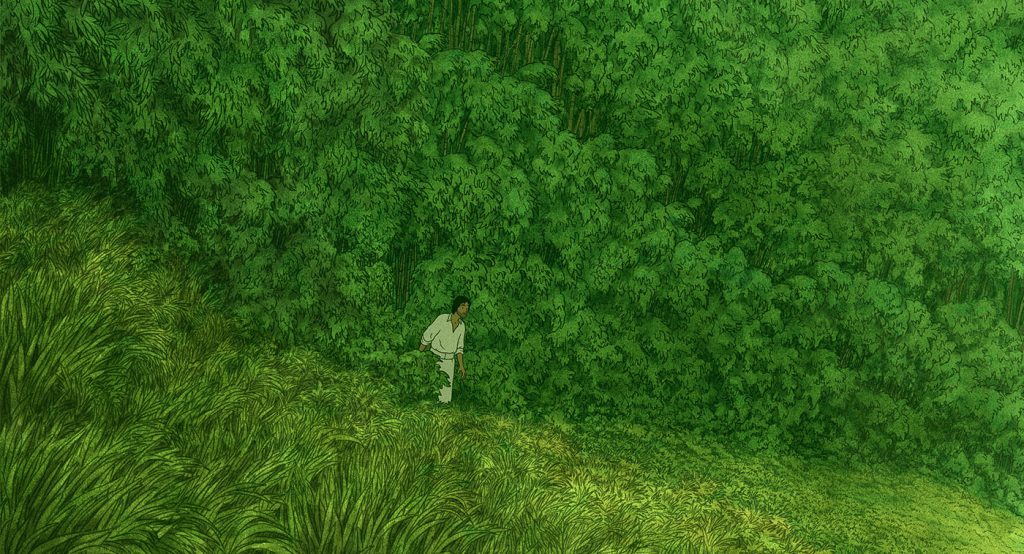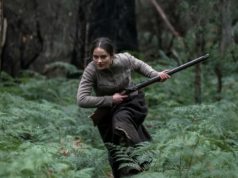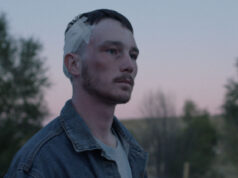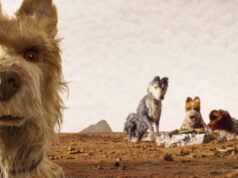The Red Turtle is a gorgeous animated film that doesn’t need words to profoundly move us, bringing tears to our eyes when we least expect it
The Red Turtle (La Tortue Rouge) (2016)
Directed by Michaël Dudok de Wit. Written by Michaël Dudok de Wit and Pascale Ferran.
There are certain films that need no words to have a profound impact on us, and The Red Turtle is one of those films. Made by Dutch animator Michaël Dudok de Wit (who took home an Academy Award for his melancholy animated short Father and Daughter) and in collaboration with Studio Ghibli, this gorgeous animated feature is completely devoid of dialogue and yet manages to convey everything it wants to say without any need of exposition. Just surrender to its magic beauty and you will find a touching story about time, love, dreams, and what makes us humans.
The Red Turtle begins with a man caught in a storm at sea and waking up on a deserted island. At first, he explores the isle and tries to find other people but soon realizes he’s alone. After finding fresh fruit, potable water and a bamboo forest there, he sees a wooden barrel floating on the water and decides to build a raft out of bamboo so that he can return to where he came from. But once he sets out into the sea, his raft is attacked and destroyed by an unseen sea creature that forces him back to the island.
Frustrated, the man builds another raft, but it is also destroyed by the mysterious creature. After building a third raft, he finally comes face to face with a large red turtle, and in a fit of rage, expressed so perfectly by the scene’s use of red and tense music, he attacks the animal with a bamboo stick and ends up killing it. But the man, feeling terribly guilty, is completely caught by surprise when the turtle’s shell splits in half and the animal magically turns into a red-haired woman. Soon, the two begin a romance after she throws away her broken shell into the sea and he does the same with his raft.
In most usual narratives, exposition is often used to explain with words what is invisible to our eyes. But The Red Turtle does the exact opposite, and the magic behind the turtle is never explained. Was this woman cursed? Is she a supernatural creature? We never know, and it doesn’t matter. The same thing goes for any dialogue that could express his guilt and her forgiveness. Why words if what they do is so meaningful? When they walk along the beach side by side, their paths on the sand converge until the two end up floating together in a lyrical hug that expresses so beautifully their togetherness.
An even more meaningful moment comes later on when they draw pictures in the sand to tell their son about the world and their lives, or when the boy, older, swims with green turtles as though he is one of them. The 2D traditional animation is stunning, blending hand-drawn and digital techniques while finding a most perfect balance between the European ligne claire cartooning style of Hergé and the art of Japanese scroll paintings. Here, more attention is paid to the characters’ sketchy movements than their facial expressions, and there are dazzling visuals like the dense green bamboo forest and the vastness of the sea.
Also fantastic is the film’s sound design, which draws us into the island with the immersive sounds of the forest, the sea, the rain, the animals (including sea lions and seagulls), the plants and trees waving in the wind. Why words when you can do such an amazing job with what you show and make us hear? Besides, The Red Turtle never ceases to stun us with its magnificent score by French composer Laurent Perez del Mar — and I wouldn’t be exaggerating if I said this is one of the most beautiful film scores I’ve ever heard. You will see what I’m saying when you reach the movie’s wonderful and poetically sad last scene.
But The Red Turtle is also impressively rich when it comes to its details — like a bottle with water representing the boy’s desire to leave the island, the man’s shadow that resembles the shape of bamboos, and the woman’s hair whose color red is usually associated with passion and love. Before the man starts building his second raft, there is a brief moment of apprehension when the forest falls into a complete silence, as if holding its breath for a second, and then all of a sudden, the sounds are back — and I personally love another scene when his son sees a green turtle under the water and goes up to the surface for more air before diving back in.
It’s all this care and love that makes The Red Turtle so special. You may not always be sure what certain elements are, or if they are meant to be interpreted as metaphors for something else, but there isn’t a second there that makes us feel that the film doesn’t know what it’s doing. And if you are patient enough and embrace all the beauty it offers, it should probably bring tears to your eyes when you least expect it.





